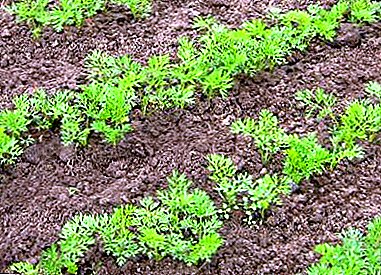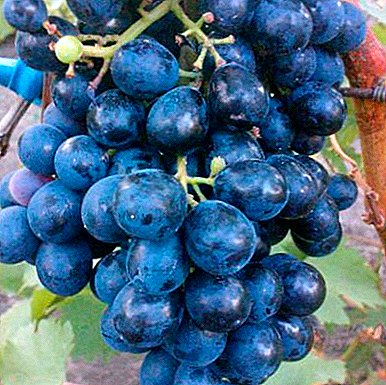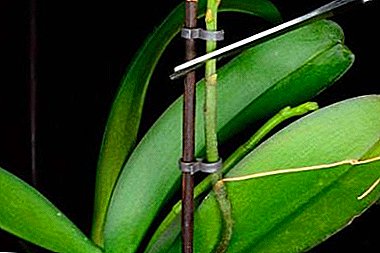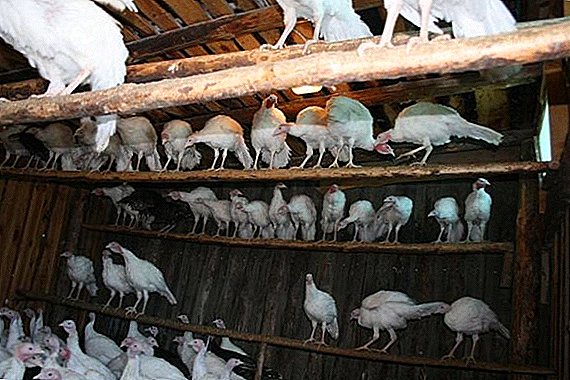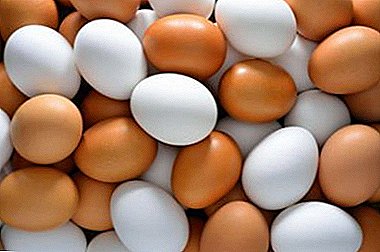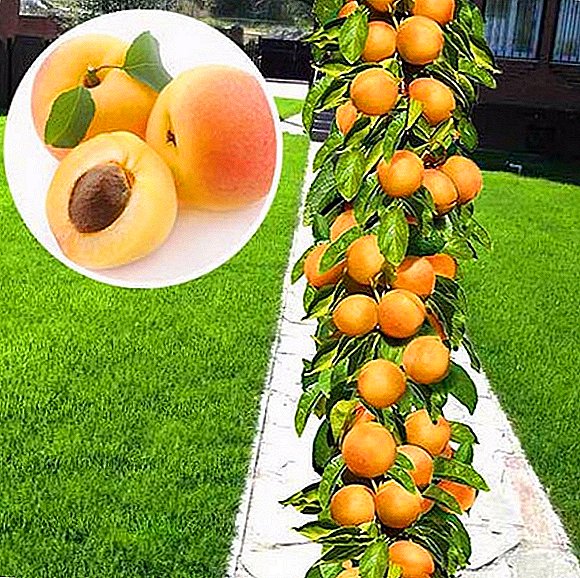 Having your own apricot tree in the garden is a real pleasure. Kolonovidny apricot varieties "Prince March" grown in Ukraine relatively recently and has not yet received wide distribution. Get acquainted with the features of apricot "Prince March", as well as with all the subtleties of planting and caring for a tree.
Having your own apricot tree in the garden is a real pleasure. Kolonovidny apricot varieties "Prince March" grown in Ukraine relatively recently and has not yet received wide distribution. Get acquainted with the features of apricot "Prince March", as well as with all the subtleties of planting and caring for a tree.
Description of the colonic apricot
Apricot "Prince March" - a useful tree that has beautiful foliage and serves as a distinctive addition to any yard or garden. "Prince Mart" - low tree, reaching only 2 m in height. Flowering occurs in March and April.
The fruits ripen in late summer, have a bright orange color with a slight "blush". The weight of ripe fruits ranges from 30 to 60 g. The leaves can be of various shapes, but always have a pointed tip. The tree has a strong straight trunk, from which short side shoots break through.
What you need to know about planting varieties
"Prince" is usually planted in winter or early spring. In regions with a mild climate, planting in the autumn season is acceptable. Other important points of cultivation of the variety "Prince March" will be discussed later in the review.

How to choose a place for planting apricot "Prince March"
Successful creation of young fruit trees in your garden should begin with the right choice of planting place. You have to make sure that you create a quality foundation for the future of the plant.
Apricots bloom in early spring. And since late spring frosts are a problem for the tree, "Prince" Not recommended land on high ground. Frost can kill flowers on a tree and almost completely deprive you of the harvest.
 In addition, if you plant an apricot in the fall, the winter can be a tough test for the plant. Low temperatures can seriously damage wood.
In addition, if you plant an apricot in the fall, the winter can be a tough test for the plant. Low temperatures can seriously damage wood.
Plant a tree at a distance of 15 cm from the wall or fence. Avoid places where eggplants, tomatoes, peppers, potatoes, raspberries and strawberries were previously grown. All these cultures can be distributors of verticillous wilting.
Apricot also requires a lot of heat during the summer season. When planting apricots choose sunny place.
Did you know? Thanks special crown shape "Prince March "takes there is much less space on the site than other apricot varieties. Besides, "Prince" - self-pollinating variety, which means that for big harvest you only need one tree.
Landing pit preparation
The landing pit must be of such size that the roots fit freely in it. The pit should be not only deep, but also wide enough so that the root system can also fit in a straightened form. Collect the excavated layer of earth in a separate pile.

While you are preparing the pit, care must be taken to protect the roots from drying out. Soak the rhizome for 1 or 2 hours in a bath or large water tank. A deep soaking in a solution with fertilizers is also recommended. Such an effective starting dressing will help the tree quickly and grow vigorously.
Important! Before planting an apricot, only one type of top dressing is applied in the soil: compost or humus, wood ash or mineral fertilizers.
Scheme of planting varieties "Prince March"
Planting work carried out in the following order:
- First of all, prepare the soil. For good growth of apricot requires fertile loamy soil, rich in phosphate and potash fertilizers. Check also the acidity of the soil. Apricots prefer a slightly alkaline soil (pH in the range of 6.0-8,0).
- Plant trees at a distance of about 7 m from each other.
- Place the tree in the planting hole, carefully opening the roots.
- Cover the pit with earth, avoiding the formation of air pockets. Try to carefully tamp the soil around the roots.
- Around the landing pit (above ground level), create a kind of bezel from the ground. This will allow the water to stand and soak.

After 3-4 years from the moment of planting the apricot tree begins to bear fruit. Be careful when collecting the fruit, so as not to damage their skin and soft structure.
Features care for the variety
Caring for apricot varieties "Prince March" is not too time consuming. The plant requires regular watering, proper feeding, diligent pruning and pest control.
How to water apricot
A lot of problems with apricot "Prince March" may be associated with improper irrigation techniques. Watering your tree too often runs the risk of making it a victim of root rot. In the meantime, inadequate watering can result in shredding of the fruit.
Read also about the cultivation of black apricot varieties: Kuban black, Black velvet, Black Prince.
Determine the level of moisture in your soil. Watering is required when the soil 15 cm lower the surface is barely wet. Using a spatula or spade, dig a small hole near the plant. Place a ruler in the hole to determine at what level the soil is barely wet.
If the soil is wet at a level of 15 cm from the surface or below, then it is time to water the plant. Usually this happens once in 10-14 days. Factors such as rainfall, drought and other climatic conditions may affect this graph. If you do not want to dig up the earth, you can instead use a moisture meter.

The “prince” needs consistent watering throughout the growing season. Deep watering once a week helps the tree survive the drought. For sandy soil, this is usually about 30 liters of water. If the soil is clay at the base, more water will be needed. In winter and spring, you may have to water only three or four times during each season.
Features feeding colloid apricot, than and how to fertilize the plant
Fertilization is important in the care of the Prince of March variety. Apricot trees of this variety need enough nitrogen, potassium and phosphorus. Usually they are supplied with these beneficial substances from the soil. Apply a small amount of fertilizer three times during the growing season. A standard commercial fertilizer is suitable as a top dressing.
Important! It is very important that the graft site was located above the ground.
Important nuances when pruning
Apricot care includes thinning of the shoots. It is better to cut the plant at the end of the winter season or in early spring, when new flowers begin to open. After pruning, the tree will look better and bring more fruit.
Here are the necessary pruning steps Freshly planted apricot "Prince March":
- remove any damaged or broken shoots;
- remove all branches that are within 45 cm from the ground;
- reduce the main trunk to a height of 90 cm;
- remove extra shoots as needed (branches are considered more frequent than occurring more than 15 cm apart);
- shorten the remaining side branches by 5-10 cm in length.

In subsequent years, a strong tree with a solid structure will be easier to prune.
Also very popular are columnar apple trees, columnar plums and columnar pears.
Reproduction of the colony-shaped apricot varieties "Prince March"
The variety "Prince March" is propagated by two general methods: seeds and grafting.
Seeds. Seeds are washed and planted immediately. Sometimes the seeds are stored in wet sand in a dark room until autumn, then they are planted in early October. Plant seeds in neutral soil enriched with organic and mineral fertilizers.
In the ridge they make a furrow, fill it with water and sow the seeds to a depth of about 7 cm. Then the bed is mulched with humus, sawdust or peat. Over the summer, the seedling grows to 1 m. The next winter, seedlings of a columnar apricot are transplanted to a permanent place.

Inoculation In the first or second year of growth, saplings are grafted with a cutting apricot. Vaccination is recommended in April or May. Another variant - vaccination at a more mature age. This operation is performed "behind the bark" of individual skeletal shoots. This will speed up fruiting.
"Prince March" - features of the variety
Finally, consider the merits of apricot "Prince of March", as well as a description of some features of the variety.
"Prince" is among the most productive varieties. Gardeners always speak positively of this early maturing variety. In the autumn from every tree going to a rich harvest.
 This apricot has excellent resistance to diseases, pests and low temperatures (up to -30 ° C). Another important advantage of the variety is beautiful flowering. Weak place varieties considered apical bud. When frosting or death of the bud, the tree produces several vertical shoots.
This apricot has excellent resistance to diseases, pests and low temperatures (up to -30 ° C). Another important advantage of the variety is beautiful flowering. Weak place varieties considered apical bud. When frosting or death of the bud, the tree produces several vertical shoots.
Did you know? Pulp of fruits of a grade "Prince March" juicy, easily separated from the bone and has an original sweet taste. Apricots have value both in raw (straight from the tree), and in dried or canned form. They make excellent jam, jam, compote, juice. Also, the fruits of this variety are often used to make pies and other desserts.
As you can see, caring for colony-like apricot varieties "Prince of March" will not require special skills from you, and the growing process will not take too long. Colony-shaped apricot trees will add beauty to the landscape of the garden, create a wide shadow and delight you with tasty fruits.


